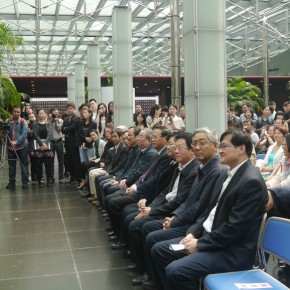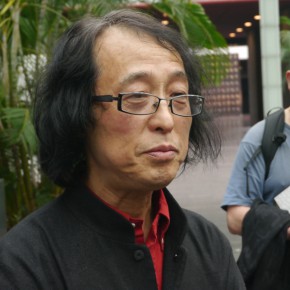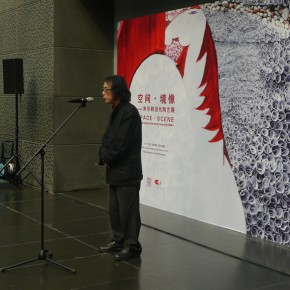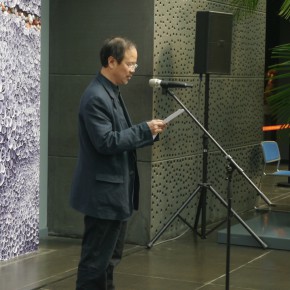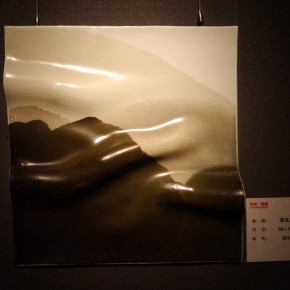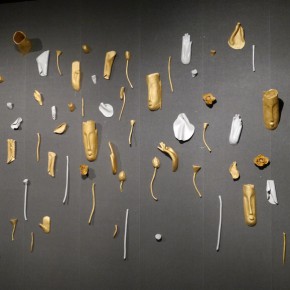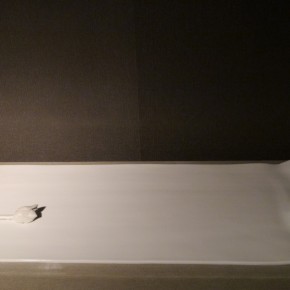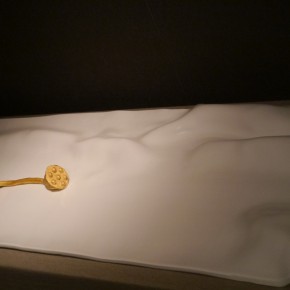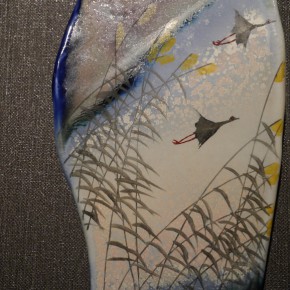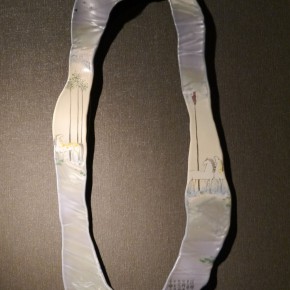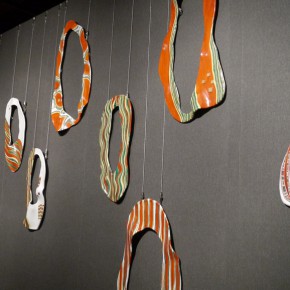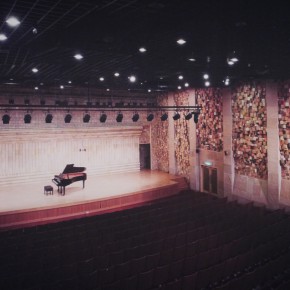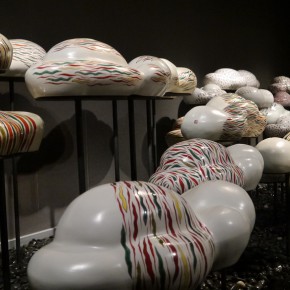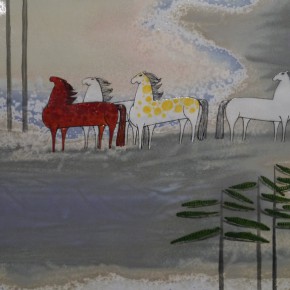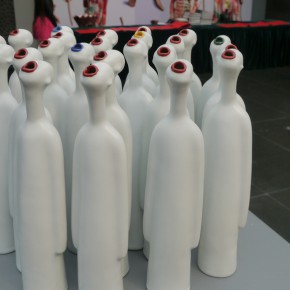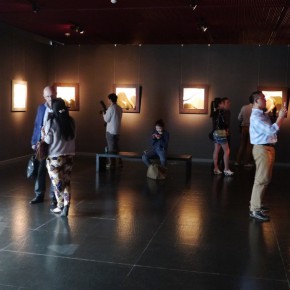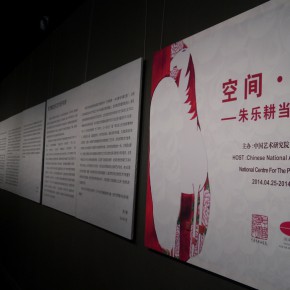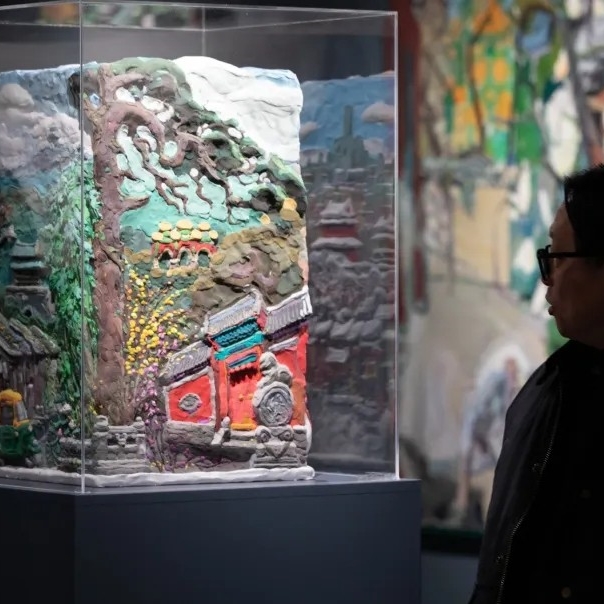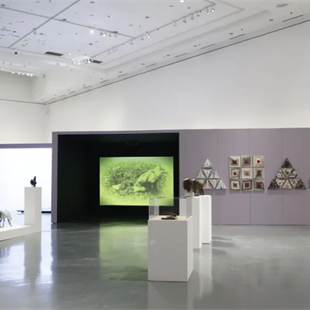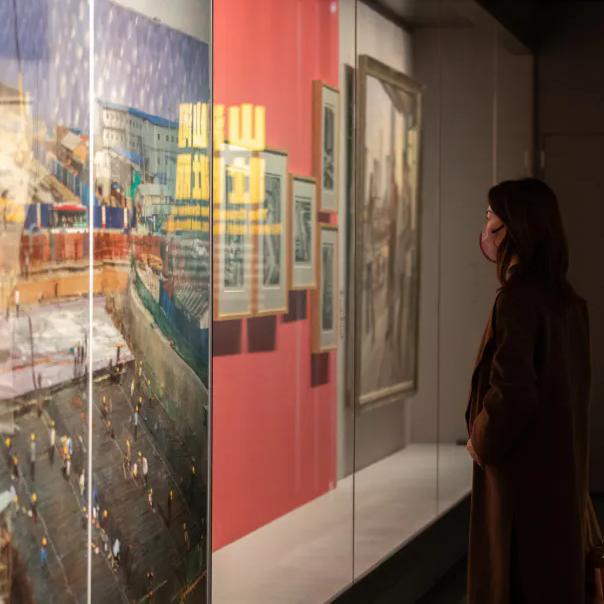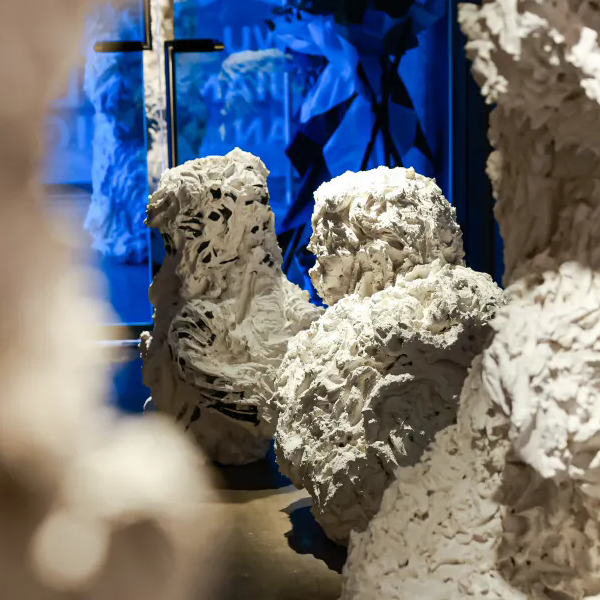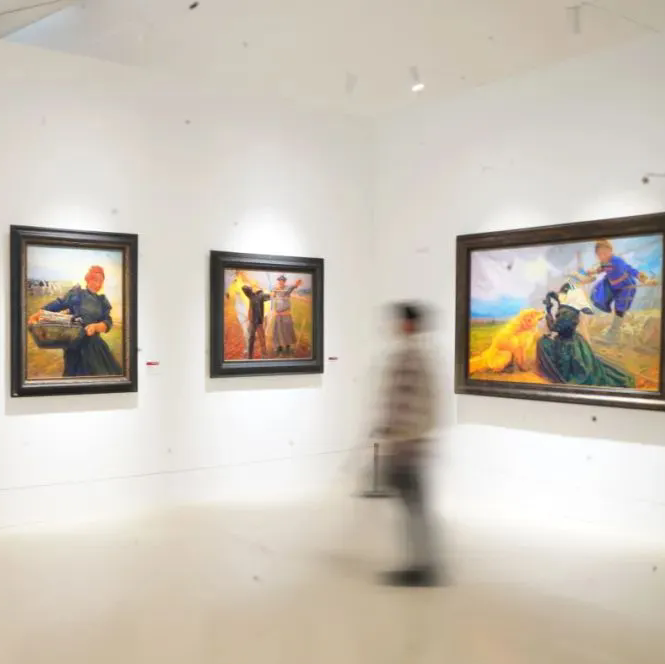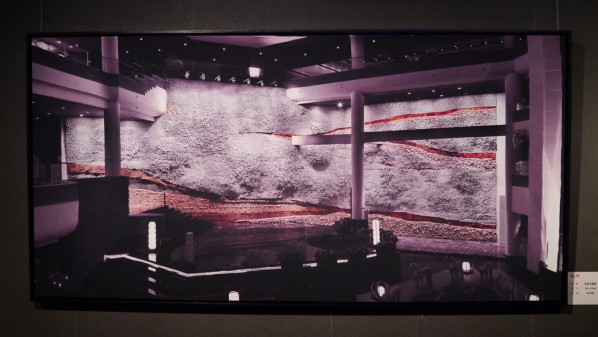
On the afternoon of April 25, 2014, “Space • Scene – Zhu Legeng’s Contemporary Ceramic Art Exhibition” opened at the National Centre for the Performing Arts, it is jointly hosted by the National Centre for the Performing Arts and the Chinese National Academy of Arts, where more than 100 contemporary ceramic works are presented, the exhibition showcases for the audience rich possibilities of ceramic art, which are not only for indoor decoration, but also create a relationship of aesthetics with the building, space, and environment.
Zhu Legeng is currently the Dean of the Institute of Art Creation of Chinese National Academy of Arts and has made great contributions to the exploration of the relationship between ceramic and modern architectural space, and left his works in many cities, among which the representatives are a series of “The Light of Life”, “Imagination of Space and Time”, “Sunny Day”, “The Impression of Autumn”, “Sky, Mountains, and Moonlight”, “Memory of Years”, “Happy Hour”, “The Misty Mountains”, “Spring Movement”, and “The Dialogue of Black and White” in the Kernel Concert Hall in Seoul, Korea. In addition, Jiujiang, Shanghai, Tianjin, China and Jeju Island, Korea all have Zhu Legeng’s works of decorative ceramic mural paintings.
The exhibition mainly presents ceramic paintings and the sculptures, including “The Singing of Life”, “Colorful Clouds”, “Ode”, “Nirvana”, “Chinese Cows”, “Lotus”, etc., among which the “Ode” is tailored for the spatial feature of the National Centre for the Performing Arts, which will be permanently on display at the Centre.
Honored guests Zhang Baowen, Zhang Ping, Chen Ping, Tian Liming, Lv Pintian, Jia Leilei attended the opening ceremony. At the opening ceremony Tian Liming said Zhu Legeng was a hard worker in art, a creative explorer, and finished spanning from the traditional ceramic art to modern times. Li Zhixiang from the National Centre for the Performing Arts said the Centre held the exhibition with the aim of promoting the exchange and dialogue between different art forms.
After the end of the opening ceremony, a discussion of Zhu Legeng’s ceramic art was held, where many scholars from China and Korea fiercely debated the content: firstly, the relationship between ceramic and modern building; secondly, how did Chinese contemporary art including ceramic art move towards the modernization of indigenization? Lv Pinchang, director and professor of the Department of Sculpture, CAFA, is one of Zhu Legeng’s postgraduate classmates, and he said Zhu directly went to study in the postgraduate course instead of entering with formal training and education, which was rarely seen. Zhu was born in a ceramic family, based on the traditional and the folk art, but ultimately left tradition behind, to explore a modern ceramic artistic road that was suited to him. Zhu Xinjian, Director of the Institute of Literary and Anthropology of Sichuan University, agreed with Zhu’s achievements from multiple angles including art space and life space, individual and the social spaces, but also pointed out that his art was trending towards the beautiful, but distant to “noble”. Huang Yan, Deputy Director of the Institute of Urban Landscape Design, the Academy of Arts & Design of Tsinghua University said, Zhu Legeng’s ceramic art not only expanded the traditional classification, more importantly his ceramic art was a strong and confident announcement of existence, instead of passive just viewing.
The exhibition will continue until May 6.
Text and photo: Zhang Wenzhi, translated by Chen Peihua and edited by Sue/CAFA ART INFO.


